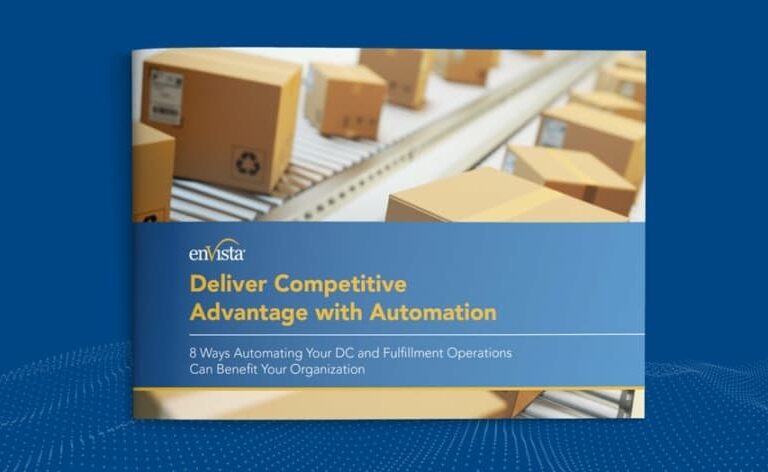Autonomous mobile robots (AMRs) are collaborative robotic devices that can move independently throughout the warehouse to perform tasks like pulling orders and transporting material.
The rise of AMRs in material handling is changing the way businesses manage and optimize their operations. From large product movement to precise piece sortation, the success of an AMR deployment goes beyond the robots themselves. A critical component in the seamless integration of these advanced technologies is the role of integrators.
Why Choosing the Right Integrator Matters
Without an integrator, your company could encounter various issues when introducing robots in a warehouse. You may end up with significant system downtime, impacting operations and customer service levels, or a depleted ROI due to underutilization of the system.
Key roles and responsibilities of a robotics integrator include:
- Operational assessment
- Technology selection
- Proof of concept
- Business process and workflow alignment
- Integration with existing warehouse software, such as ERP, WMS, AMR fleet software and physical infrastructure
- System performance testing
- Future growth and scaling plans
Implementing AMRs isn’t just about selecting the right robot for the job – it’s about ensuring that these robots fit into a broader system of hardware, software and the human workforce. Integrators bring an essential level of expertise to ensure that AMRs are not only installed but fully optimized to deliver peak performance.
AMR Explosion: A Breakdown by Use Case
AMRs have become an essential part of warehouses and distribution centers. As this technology continues to evolve, its applications have expanded to cover a wide range of tasks across various industries.
1. Large Product Movement
Manufacturers and distributors rely on AMRs to move heavy loads. As a result, human employees don’t have to risk straining themselves and can apply their skills to other responsibilities
AMRs are an integral part of moving bulky items, such as:
- Pallet movements
- Storage and retrieval at both floor and vertical levels
- Mixed case palletizing
- Moving shelving units and pick cages
2. Small Product Movement
In ecommerce and micro-fulfillment centers, AMR can support order fulfillment by traveling through the warehouse, pulling items and delivering them to an employee for packing. This saves time and boosts productivity.
For lighter loads, AMRs handle smaller items like:
- Cartons, totes and trays
- Follow bots replacing manual push carts
- Destination bots that transport items to designated locations
- Pick and place bots that bring goods to human workers (or vice versa) for goods-to-person workflows
3. Piece Sortation
Some AMRs are used in automated sortation systems, which integrate with your WES or WMS. These AMRs typically need vision systems or AI-driven recognition to ensure they sort products accurately.
AMRs are being used in automated sortation systems, particularly for:
- Order building
- Sorting items into destination totes or shippers
- Automated put systems that reduce the need for manual labor
- Elevated sorting platforms that optimize space usage
4. Humanoid Robotics
Humanoid robots, while still considered emerging technology, can be designed to handle more complex tasks, particularly repetitive or heavy work. While vision systems for smaller objects need improvement, integrators can start piloting these robots for niche use cases like healthcare and high-touch assembly.
Humanoid robotics can be used for:
- Moving heavy (~50 lbs) totes, cartons and trays
- Performing repetitive tasks with consistent-shaped objects
The Future of AMRs
AMR technology is evolving rapidly in its ability to operate alongside warehouse workers during key tasks like picking, packing and sorting. With new advancements like AI-enhanced navigation, Edge computing and machine learning, AMRs could become indispensable in the manufacturing and distribution industries.
Where We Are Going
You can expect to see these advancements, especially in the health care, food service and retail sectors:
- Data-driven solutions: The reliance on data analysis will continue to grow, driving more precise AMR deployments.
- Improved vision systems: Advances in 3D vision for piece picking and better end-of-arm manipulators will enable AMRs to handle more intricate tasks.
- Goods-to-Robot (GTR): Goods-to-Person (GTP) systems are evolving into GTR, where robots directly retrieve and handle products.
- Reduced conveyor dependency: As AMR technology advances, traditional conveyor systems will be replaced by more versatile, faster sortation options.
- Robotic trailer loading/unloading: AMRs capable of handling complex tasks like trailer loading and unloading are expected to become more common.
- Software enhancements: Predictive controls and improved software will further optimize AMR performance.
- Real-time problem resolution: Advancements in AI will help warehouses go from reactive to proactive, solving issues before they occur.
What Stays the Same
No matter how far AMRs advance, these elements won’t change:
- Storage media: Despite advances in AMRs, traditional storage methods like racking, shelving and platforms remain foundational.
- Packaging: While packaging types may evolve, businesses will still need to ship products in secure containers.
- High-speed sortation: The need for rapid, efficient sortation systems will persist.
- Human roles: Integrators will always play an essential role in adding AMRs to your workplace. You’ll need their intuition, problem-solving and strategizing skills to overcome challenges that robots can’t solve.
The Vital Role of Integrators
Integrators bring the following crucial benefits to your business:
- Technology selection
- Site layout and flow analysis
- WMS/ERP/AMR software integration
- Workflow design
- Staff training and onboarding
- Ongoing support and optimization
Common integration issues, such as an outdated WMS and a lack of real-time data, make it difficult to install a fully automated material handling system on your own. This is where the role of integrators becomes crucial. Integrators not only help businesses choose the right AMRs but also reduce downtime, increase productivity and produce a faster ROI. Interested to learn more? Let’s have a conversation!™






